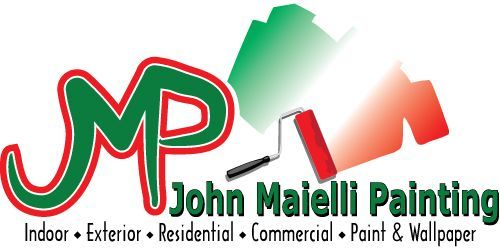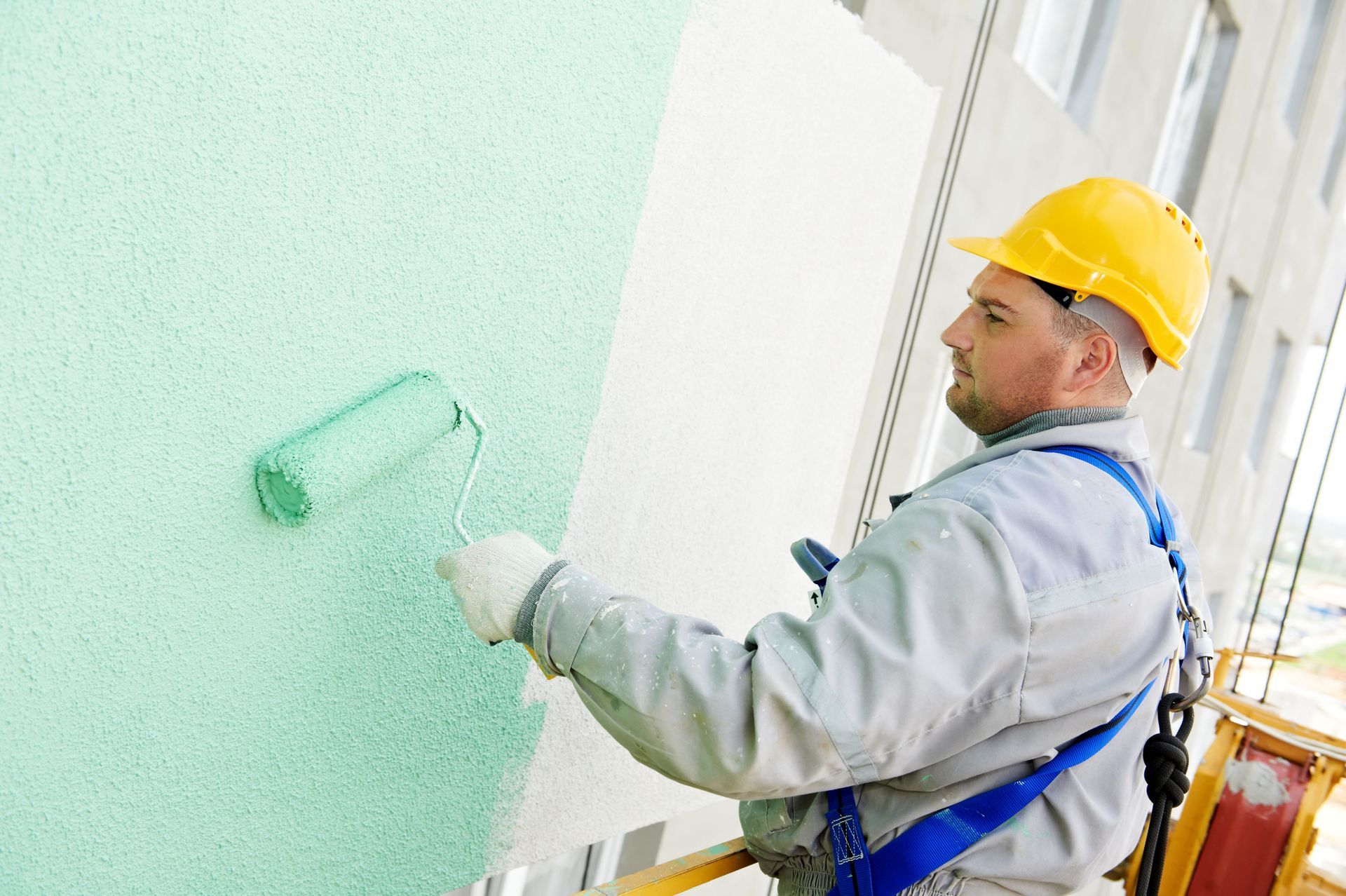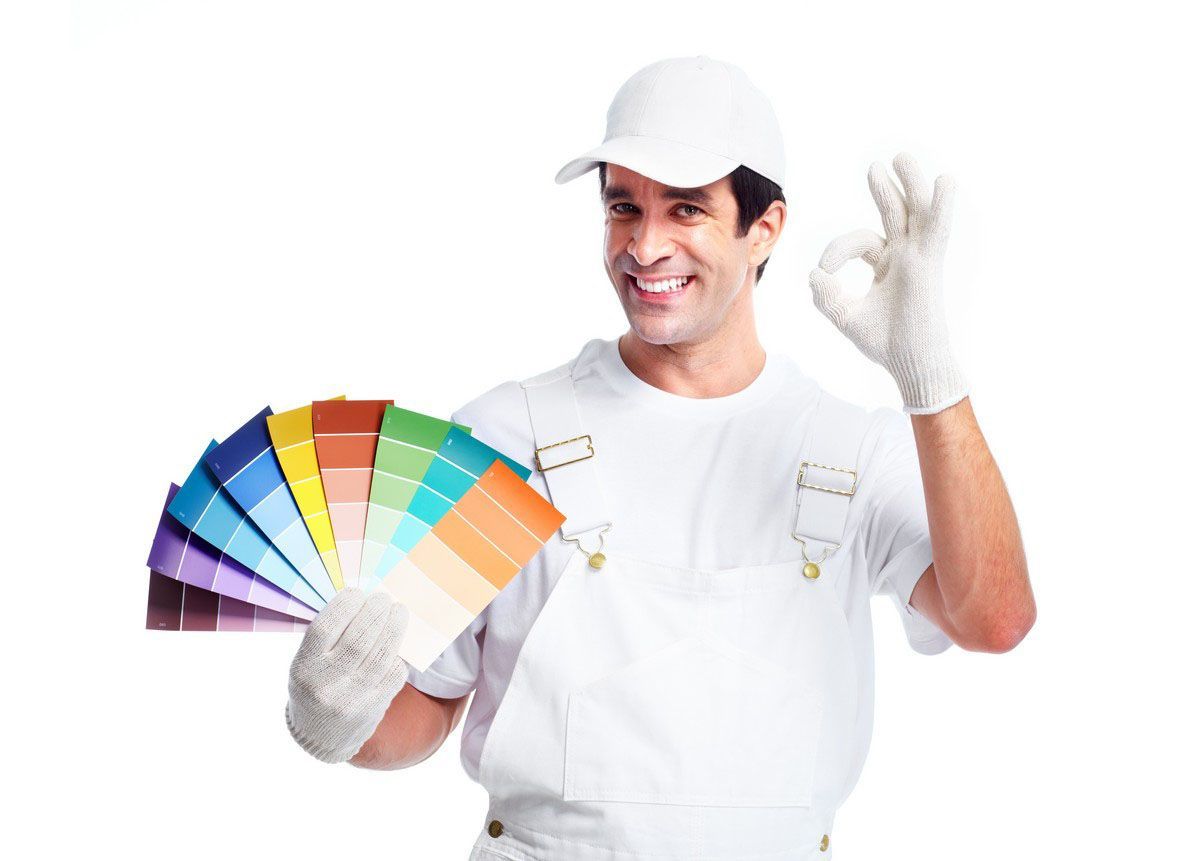6 Signs Your Home’s Exterior Is Ready for a Fresh Coat of Paint
Maintaining your home's exterior is crucial for protecting your investment and enhancing curb appeal. Paint serves as the first line of defense against the elements and can significantly determine your home's aesthetic charm. One of the most important aspects of exterior maintenance is knowing when it's time to repaint. Without a doubt, various signs will inform you that it's time for a fresh coat. In this article, we'll explore the signs that indicate your home's exterior needs a fresh coat of paint.
1. Visible Cracking and Peeling
Visible cracking and peeling are primary signs that your home's exterior needs repainting by a local painting contractor. Paint deterioration often results from exposure to environmental elements such as rain, sun, and wind. The expansion and contraction of building materials with temperature changes can also cause paint to crack and peel. Another common cause of peeling and cracking is insufficient surface preparation before painting. Properly preparing the surface involves cleaning, sanding, and priming to ensure the paint adheres well and lasts longer.
Weather significantly impacts the longevity of exterior paint, especially in regions with harsh conditions. Intense sunlight accelerates paint fading, while moisture from rain and snow seeps into cracks, exacerbating paint issues. It's essential to inspect your home for signs of weather-induced paint damage, focusing on areas most exposed to the elements. Tools like magnifying glasses and moisture meters can aid in determining the extent of paint damage. Identifying problem areas early allows homeowners to address them before they worsen and incur higher repair costs.
Different types of surfaces present various vulnerabilities to paint issues. Wooden surfaces are prone to expanding and contracting, increasing the likelihood of paint cracking. In comparison, metal surfaces may rust, causing paint to bubble and peel. Inspection is crucial regardless of the surface material to prevent long-term damage. Regular repainting by a painting contractor and maintenance ensure that your home stays protected, visually appealing, and less vulnerable to environmental damage.
2. Fading and Discoloration
Fading and discoloration of paint are often due to prolonged sun exposure. UV rays from the sun can break down the paint's pigments, causing colors to appear washed out and less vibrant. Fading is more noticeable in darker paint colors as they absorb more heat and degrade faster. Thankfully, technological advances in paint formulation have led to weather-resistant options that curb fading. Homeowners should choose paints with UV inhibitors for long-lasting color retention.
The quality of paint plays a significant role in how well it can withstand environmental challenges. According to This Old House, a gallon of paint usually costs between $15 and $60, with higher-priced options often offering better durability and coverage. Cheaper paints may save money initially but often lead to quicker fading and more frequent repainting. Investing in high-quality paints designed for exterior use provides a more extended protection period and improved aesthetic appeal. When selecting paint, consider features such as mildew resistance and adherence to various materials.
Certain areas of your home are more vulnerable to discoloration due to environmental exposure. South- and west-facing walls receive more sunlight, thus experiencing faster paint degradation. Similarly, areas near water fixtures or under faulty gutters may experience discoloration from moisture. It's crucial to routinely inspect these areas for early signs of fading. Regular maintenance and timely repainting of these sections by a local painting contractor will keep the entire home's exterior looking fresh and unified.
3. Mold, Mildew, and Stains
Mold and mildew are common problems in areas with high humidity and poor ventilation. They appear as black or green patches on the paint surface and can cause discoloration and structural damage. Mold and mildew thrive on paint in areas where moisture accumulates, such as near roofs, windows, and shades. Regular cleaning and inspection can help identify these issues early. Addressing mold and mildew promptly can prevent the need for extensive repairs and maintain your home's healthy environment.
Mold exposure poses health risks to inhabitants, including respiratory issues, allergies, and skin irritations. Besides harming occupants' health, mold growth can also compromise a home's structural integrity by promoting wood rot. Cleaning mold and mildew requires using specialized cleaning agents that eliminate spores and prevent reoccurrence. Homeowners should wear protective gear and ensure proper ventilation when removing mold. Repainting with mold-resistant paints can significantly deter future growth and maintain a mold-free environment.
To prepare for repainting, mold and mildew must be thoroughly cleaned and removed. Start by scrubbing affected areas with a bleach-water solution to kill mold spores and prevent them from embedding into the new paint layer. It's crucial to allow the surfaces to dry completely before applying paint to prevent trapping moisture underneath. Paint with anti-fungal properties offers long-term protection against mold growth. In addition to applying the right paints, proper home ventilation and drainage systems also play roles in mold prevention.
4. Chalky Residue on Surfaces
Chalking on paint surfaces refers to the formation of a fine, powdery residue due to the breakdown of paint binders. This phenomenon occurs when UV radiation or poor paint formulation causes the most brittle parts of the binder to rise to the surface. Chalky residue can be easily detected by running a finger over the paint; if a noticeable powder transfers, chalking has occurred. This issue primarily affects older paints and points to a need for repainting. Modern paints have additives to minimize this effect, and selecting such can extend a new coat's lifespan.
Testing for chalkiness is a straightforward process that involves simple tools and observant assessment. Homeowners can use a damp sponge to wipe the painted exterior and see if any residue comes off. Beyond visible residue, degraded paint may also display a matte or dusty appearance. Addressing chalking requires removing the existing layer through pressure washing or hand scrubbing before applying any new paint. Understanding the root causes is essential to minimize the recurrence of the problem.
Chalky surfaces indicate compromised paint protection, stressing the importance of timely remediation. Moisture can easily penetrate through the residue layer, leading to surface cracking and substrate damage. Cleaning surfaces and using primers that promote paint adhesion are key to preparing chalky zones for new paint. Specialty paints engineered to guard against UV radiation and chalking can offer sustainable solutions. Regular maintenance and thorough assessment ensure that your home's exterior remains strong against environmental forces.
5. Caulk Cracking and Shrinking
The purpose of caulking in home exteriors is to seal gaps between different materials, preventing water intrusion and maintaining structural integrity. Over time, environmental exposure causes caulk to lose its elasticity and shrink, leading to cracking. Identifying cracked or missing caulk is vital to preventing greater issues like moisture damage and heat loss. Homeowners should routinely inspect joints around windows, doors, and siding for such signs. Re-caulking these areas as needed ensures a tight seal and prolongs the life of adjacent surfaces.
Various environmental and application factors contribute to caulk failure. Fluctuations in temperature cause materials to expand and contract, stressing caulk lines. Inferior caulk products or improper application can also hasten degradation. Regular exposure to sunlight and rain exacerbates shrinkage and cracking, emphasizing the need for exterior-grade caulk. Addressing degraded caulk promptly minimizes energy loss and prevents related paint damage.
Immediate intervention is required when signs of caulk failure become apparent. Cracks or missing segments might allow moisture penetration, leading to wood rot or paint bubbling. Re-caulking with high-quality, flexible sealant ensures continued protection from environmental intrusions. Additionally, hiring a painting contractor to apply a fresh coat of paint after caulk repairs solidifies the defense against further damage. Scheduling routine inspections and maintenance can identify and rectify issues before they necessitate costly repairs.
6. Time Since Last Paint Job
The lifespan of exterior paint varies but generally ranges from five to 10 years, depending on factors like climate, paint quality, and application method. Regular environmental exposure might accelerate paint degradation, necessitating more frequent repainting. Keeping a record of when the last paint job occurred aids in gauging when a new coat might be due. Utilizing durable paints, even if initially more expensive, ensures a longer-lasting finish that withstands the elements. Such investments often result in lower maintenance costs and prolonged aesthetic appeal.
Several determinants influence how soon your home might need a new paint job, from the building materials to local climate conditions. For instance, wood surfaces generally require more frequent repainting than brick due to their porous nature. Extreme weather, including heavy rain and intense sunlight, also affects paint durability. Evaluating historical weather patterns can help homeowners anticipate when conditions may necessitate repainting. Awareness of these influencing factors assists in proactive maintenance, protecting the property's value and appearance over time.
Staying on top of a repainting schedule with your local painting contractor effectively ensures your home always looks its best while safeguarding the structure. Establishing a regular timetable allows for adequate budgeting and planning. Homeowners should also monitor current weather conditions and preventive measures for maximizing paint longevity. Implementing protective features like awnings or vegetation buffers can lessen environmental impacts. Proactive evaluations and maintenance enhance paint durability significantly and uphold a home's exterior appeal.
Regular inspections and maintenance can ensure that your home's exterior remains in top condition. By recognizing these signs of paint deterioration and addressing them promptly, you can protect your home, enhance its value, and maintain its aesthetic appeal for years to come. Investing in high-quality paints and effective protective strategies will result in a durable, resilient, and attractive exterior. If you're looking for a reliable painting contractor to assist you with repainting, contact John Maielli Painting today.



Share On: